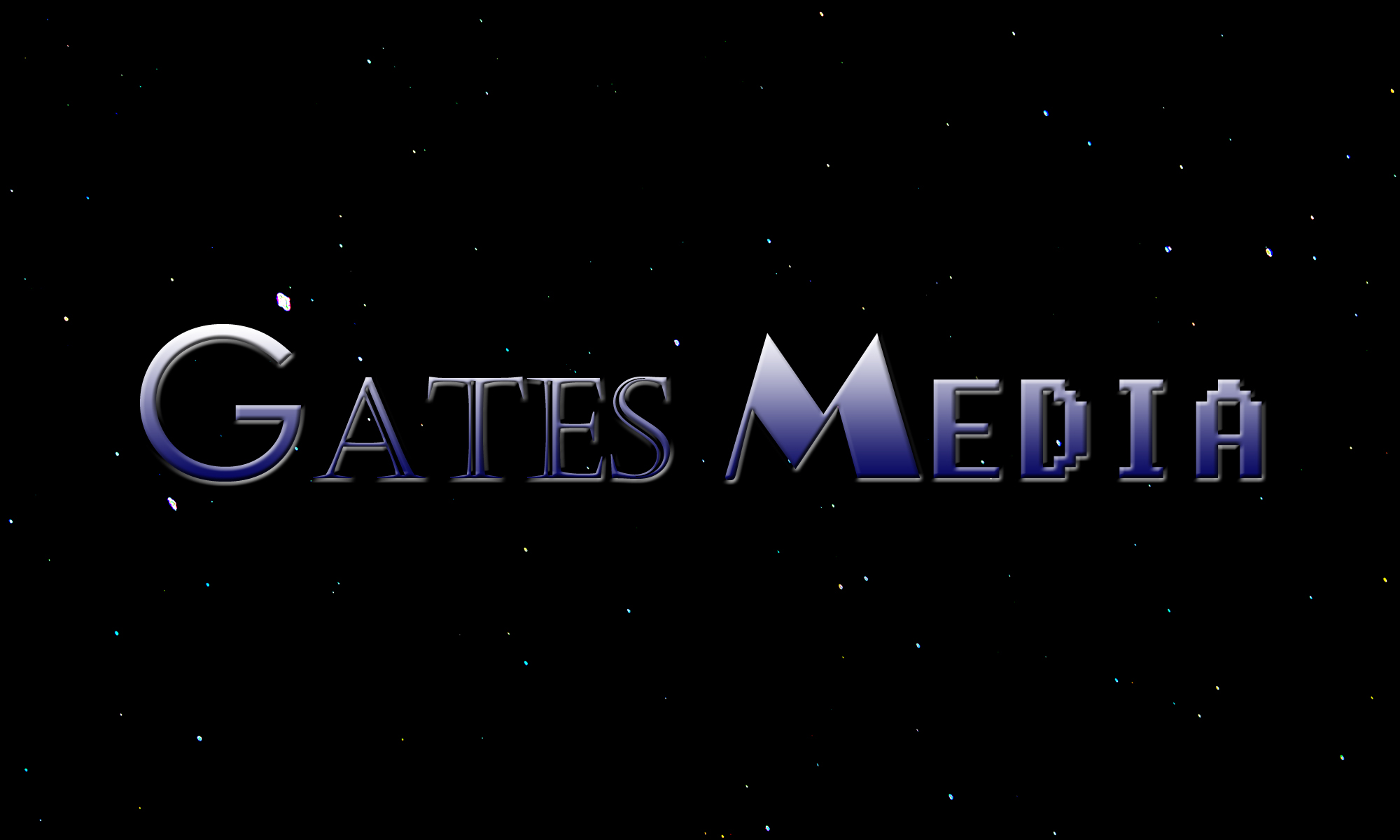As some of you may know, I recently finished planning and outlining the next draft of Twelve’s Design, my paranormal thriller novel. Before I return to editing though, I thought I’d take a minute to share the tools I use to track the characters, locations, scenes, revisions, and notes for this book. I started using this system two years ago and have found it very helpful for finding useless scenes, tracking sub-plots and information, and managing my notes. Perhaps another writer out there will find this process helpful for their own book!
I use Trello and Evernote for keeping notes and outlining. Trello has been especially helpful though, so this post will focus on it.
The Outline
The images below show part of the Trello Board for Twelve’s Design’s outline. Spoilers are redacted. Each chapter in the book gets a list in Trello, and each scene gets a card. Card titles contain what happens in the scene and the scene’s narrator. The card content is usually sloppy, maybe even a little outdated, and the titles, boring. But hey, these are notes. I’m not obligated to make them look nice.
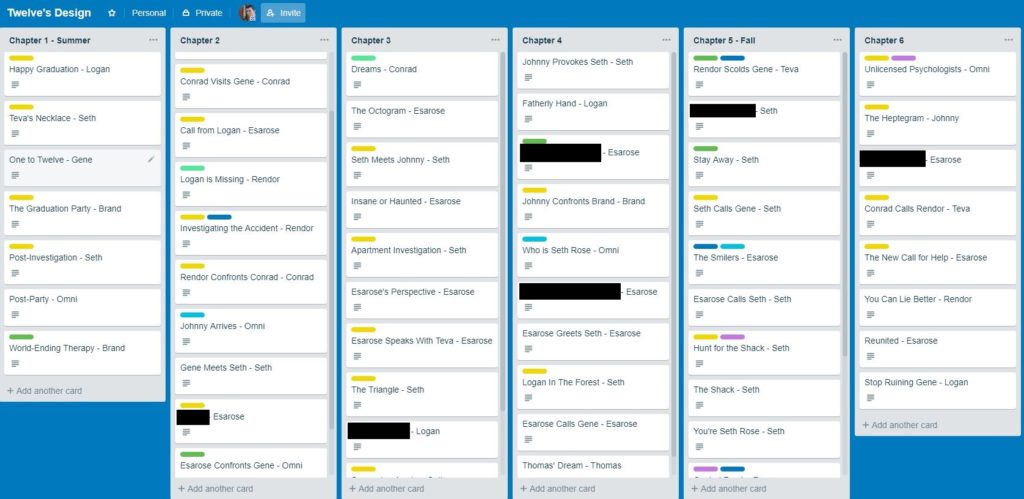
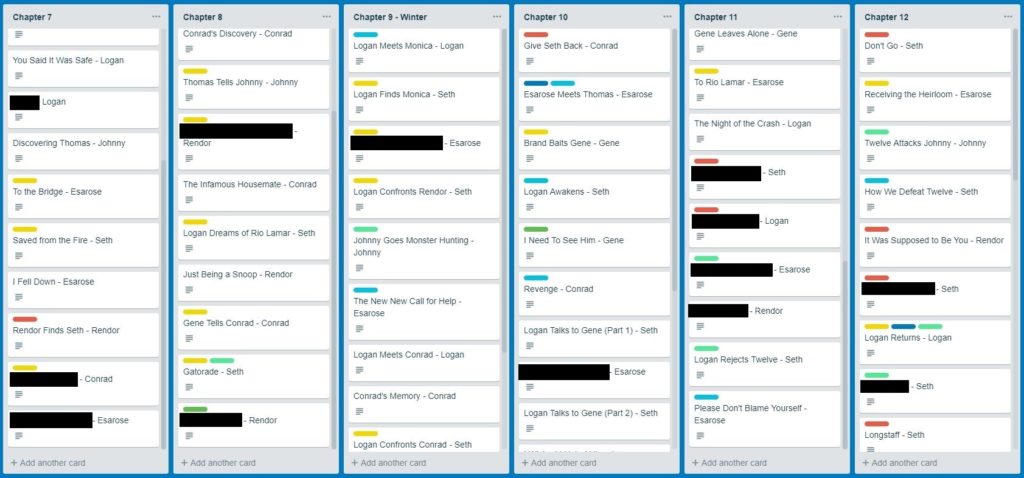
Cards are labeled with one or more colors if I need to move, modify, or write the scene. As you can see, the outline is currently a rainbow that gets steadily more colorful as it approaches the end of the book. The color key is below:
- Green – potential to minor content changes
- Yellow – minor to major content changes
- Light Blue – major content changes to complete rewrite
- Red – new scene
- Blue – move to a new location
- Light Green – delete
- Light Green with other labels – if you can’t fix it, delete it
- Purple – clarify when this scene takes place
Since its first draft, Twelve’s Design has been a collection of scenes that need to happen at some point. This card system continues that tradition while making it easier to oversee and manage scenes. It shows me how narrators are distributed, so I can ensure I don’t have the same narrator for too many scenes in a row. I can also quickly move scenes around and visualize them in different orders before committing to one in a draft.
Scene Cards
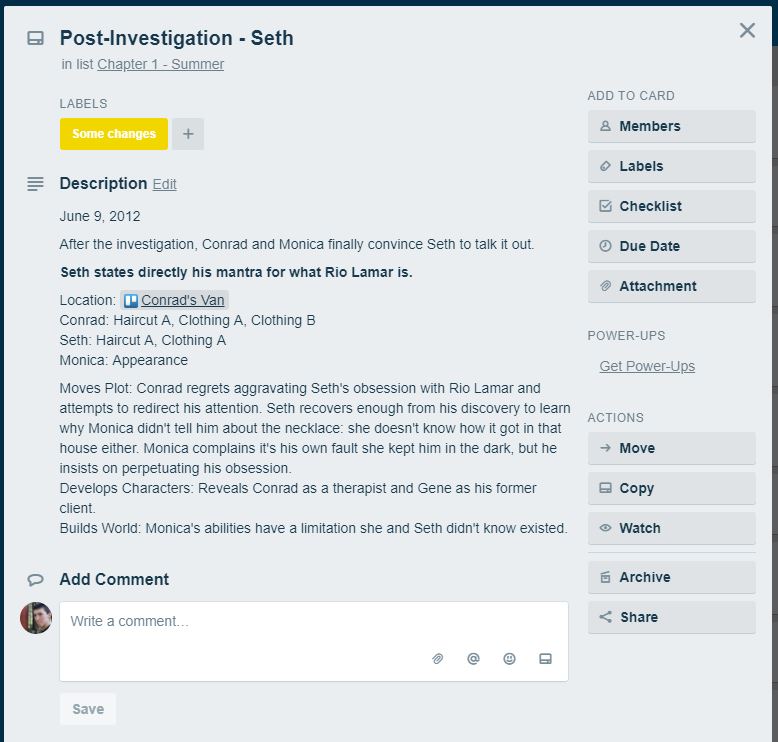
Scene cards all have the same format. At the top
The card’s final sections reveal the scene’s purpose in the book, how it moves the plot, develops the characters, and builds the world. If I can’t fill at least two sections, that tells me the scene is useless, and I should probably
Character Cards
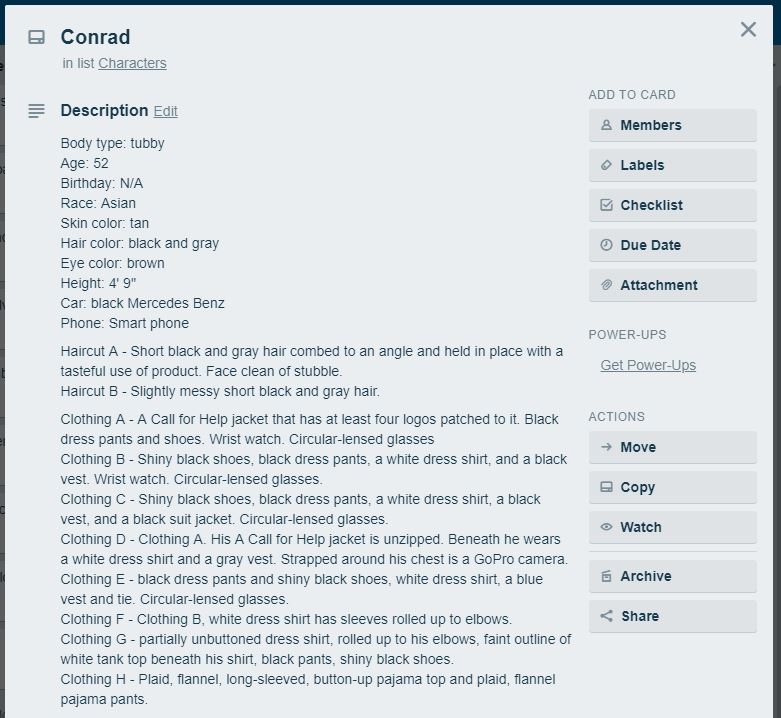
Above is an example character card. At the least, character cards contain a basic physical description and every haircut and outfit they wear in the book. Yes, I know I’m ridiculous listing all this clothing, but at least it’s not in the book! Character cards can contain more information such as what the character’s job is, what scars they have… or the history and terms of their probation period.
I also have a note for each character in Evernote. These notes primarily contain the character’s goals and motivations. I refer to them every time I need to fill out a “Moves Plot” section in a scene card. I also use Evernote to write stream-of-consciousness essays and short stories detailing the characters’ backgrounds, beliefs, and justifications for their behaviors.
Location Cards
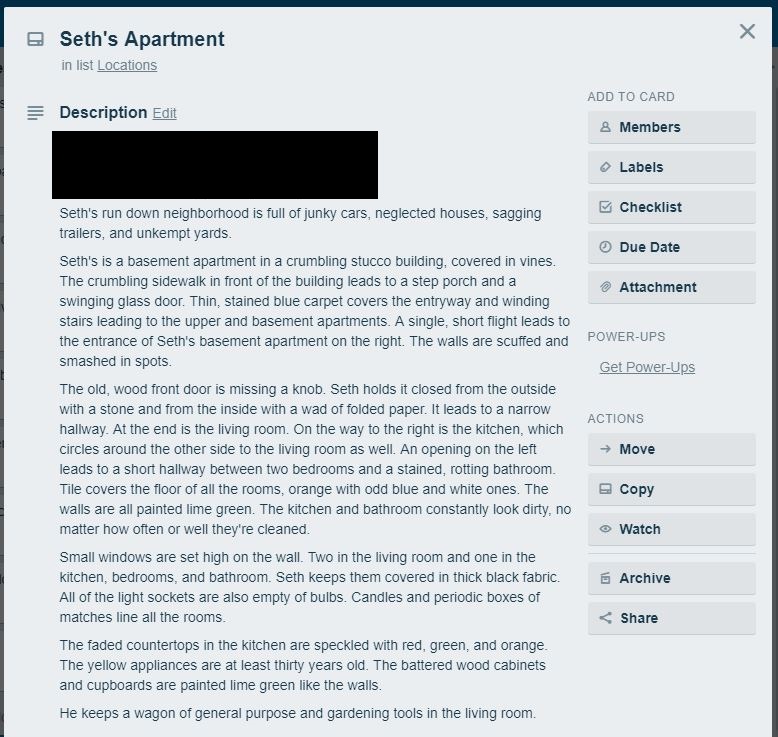
Finally, I dump detailed location descriptions in location cards. In this way, they perform a similar function to the clothing descriptions in character cards. I need them; the reader doesn’t necessarily. These cards may also contain a physical address (the book takes place in a real-world city). Fun fact: Seth’s Apartment is based on a real apartment a friend of mine rented, missing doorknob and all.
Conclusion
I also have Trello lists with cards containing research, ideas, and random notes. What I described in this post, however, is how I organize the bulk of my thoughts in Trello. Despite everything I need to fix in Twelve’s Design‘s next draft, I think this system has served me well. I hope discussing it has given you ideas on how to improve your own note-taking and outlining system. Tweet at me (@SilentFuzzle) if it does!
Even if it’s no help at all, it’s satisfying to start with a rainbow-colored outline and steadily remove labels until the book reaches what you envisioned… That is until you scatter yellow labels across it a week later when you realize something’s wrong.
